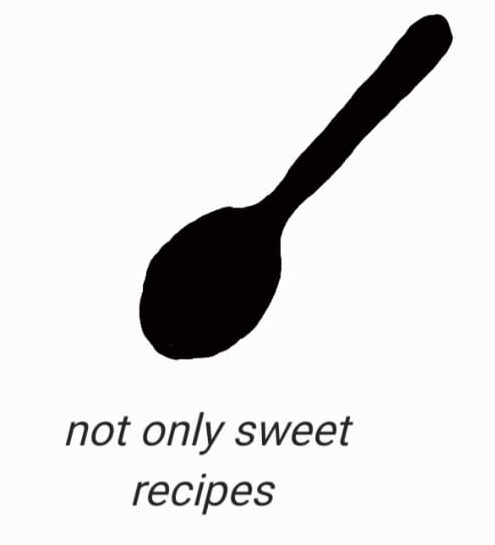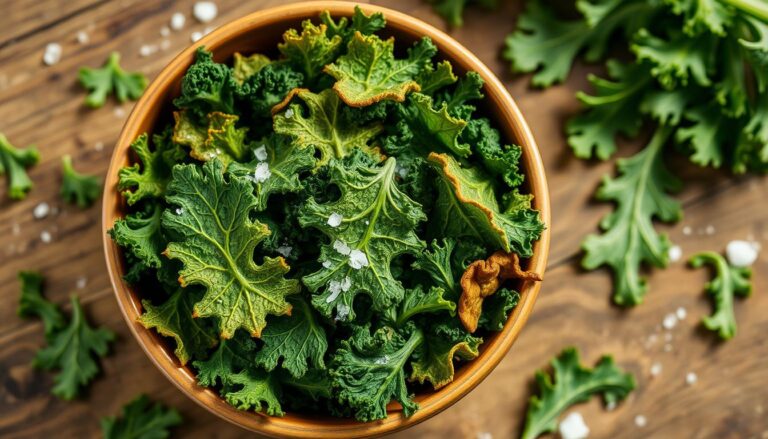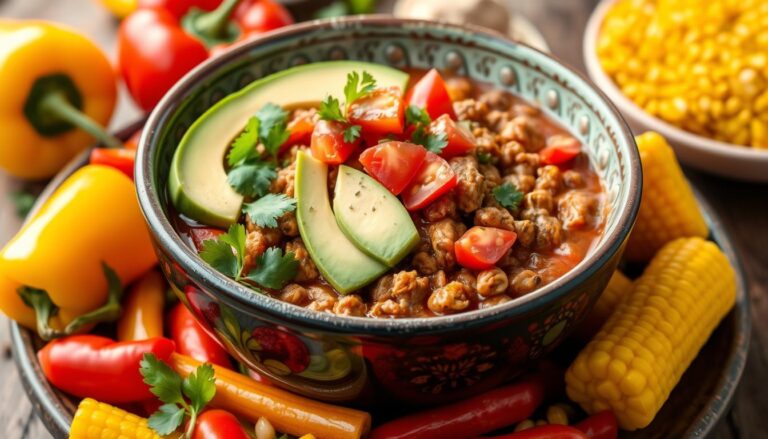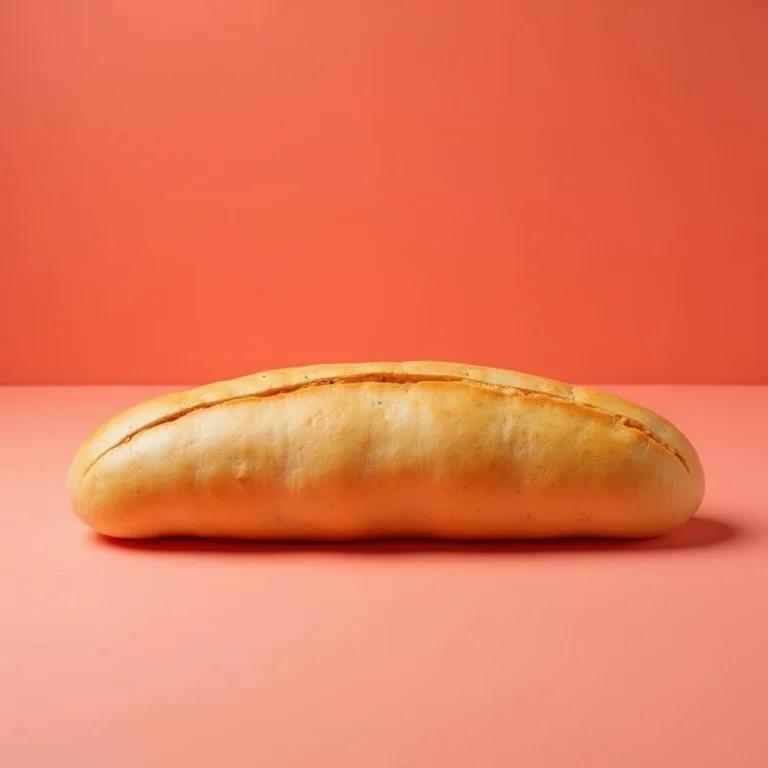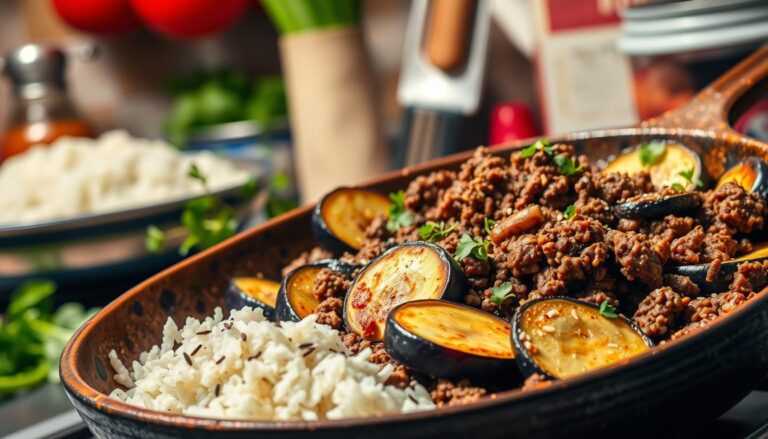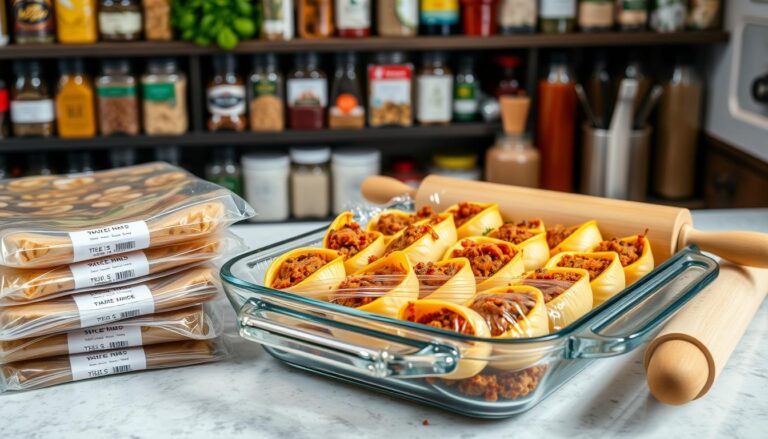intro
As the sun sets, the table is set with fine linens and glassware. Tonight, you’re in for a culinary journey. Lobster tails in sauce, the peak of elegance, will be the main event.
The lobster meat, tender and succulent, meets a rich, creamy sauce. This mix is a delight for the senses. It’s perfect for any special occasion, from anniversaries to birthdays, or just a night with friends. It’s sure to wow your guests and create unforgettable memories.
Table of Contents
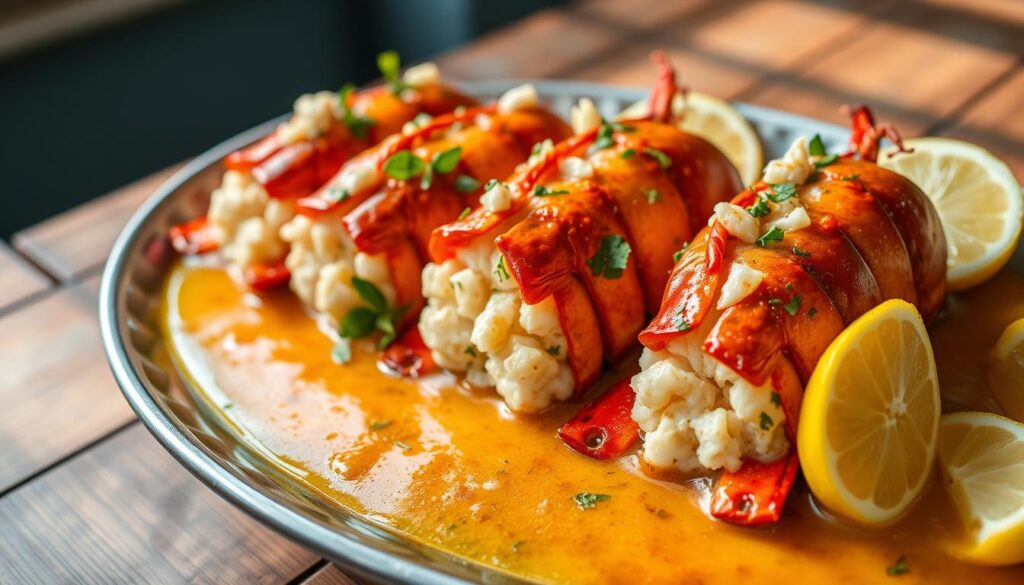
Key Takeaways
- Lobster tails in sauce are an elegant and indulgent dish perfect for special occasions.
- The recipe calls for fresh or frozen lobster tails, which are combined with a creamy, flavorful sauce.
- Preparation involves boiling the lobsters, removing the meat, and using the shells to create a rich, aromatic stock.
- The sauce can be a classic creamy tomato-based blend or a garlic butter white wine sauce, offering versatility.
- Pairing the dish with complementary ingredients and proper plating techniques can elevate the presentation and dining experience.
Understanding Different Types of Lobster Tails
Choosing the right lobster tail can greatly impact your dish. Maine lobster and spiny lobster are two common types. Each has its own flavor and texture.
Fresh vs. Frozen Lobster Tails
Fresh lobster tails are known for their sweet flavor and tender texture. But, frozen tails are also a good choice. They are frozen quickly after catching, keeping their fresh flavor and quality. Make sure to thaw frozen tails in the fridge or under cold water before cooking.
Choosing the Right Size
Lobster tails vary in size, from 3 ounces to 1 pound. A good serving size is 3 to 10 ounces. Smaller lobsters, called “chicken lobsters,” are perfect for pasta. They have sweet and tender meat.
Quality Indicators to Look For
For fresh lobster tails, look for ones that are firm to the touch with a slight sea-like aroma. Stay away from tails that are discolored, have freezer burn, or feel soft. For frozen lobster tails, ensure they are free of freezer damage and the packaging is intact.
“Selecting the right type and quality of lobster tails is crucial for creating delicious and satisfying dishes.”
| Lobster Tail Variety | Flavor Profile | Texture | Ideal Cooking Method |
|---|---|---|---|
| Maine Lobster | Buttery, sweet | Tender | Grilling, baking, steaming |
| Spiny Lobster | Slightly briny, sweet | Firm | Grilling, broiling, poaching |
Essential Tools and Equipment for Preparation
Preparing delicious lobster tails needs the right kitchen tools and equipment. Whether making a chicken vegetable stir fry or a fancy lobster dish, the right kitchen tools are key. For lobster preparation equipment, there are a few must-haves before starting.
You’ll need a big pot for boiling the lobster tails and a skillet for the sauce. Sharp kitchen shears or scissors are essential for cutting through lobster shells. A strong cutting board and tongs are also useful during prep.
Other useful items include a fine-mesh sieve for straining the sauce and a sharp knife for cleaning the lobster. A large bowl is handy for discarding shells or waste. Remember to use scissors to cut off rubber bands from lobster claws before cooking.
| Essential Kitchen Tools | Lobster Preparation Equipment |
|---|---|
| Large pot for boiling Skillet for sauce-making Kitchen shears or scissors Cutting board Tongs Fine-mesh sieve | Knife for cleaning and deveining Large bowl for discards Scissors for removing rubber bands |
Having the right tools makes preparation smooth and efficient. This lets you make tasty lobster dishes easily. Whether it’s a simple chicken vegetable stir fry or a fancy lobster meal, these tools are your kitchen allies.
Preparing and Butterflying Lobster Tails
Preparing and butterflying lobster tails is a simple yet essential technique for achieving the perfect lobster dish. Whether you’re whipping up a chicken cabbage stir fry or focusing on the star of the show with butterflying lobster tails, mastering this method is key. It unlocks mouthwatering flavors and tender textures.
Step-by-Step Cutting Technique
Start by using a sharp pair of kitchen shears to carefully cut down the center of the lobster’s back shell, all the way to the tail fan. This will allow you to open up the shell and expose the delicate meat inside. Be gentle and avoid cutting too deeply to prevent damaging the tail.
Cleaning and Deveining
Once the shell is open, take a moment to inspect the lobster and remove any remaining veins or shell fragments that may have been left behind. Using a small paring knife or tweezers, gently pull out the dark intestinal vein that runs along the length of the meat. Rinse the tails under cold water to ensure they are clean and ready for the next step.
Proper Shell Separation Methods
With the shell split and the vein removed, it’s time to separate the meat from the shell. Carefully lift the meat, keeping it attached at the base of the tail. This will allow the meat to sit atop the shell, creating the signature “butterflied” appearance. For added flavor, you can even tuck in a small wedge of onion or a few smashed garlic cloves between the meat and shell before cooking.
By mastering these lobster preparation techniques, you’ll be well on your way to creating show-stopping butterflying lobster tails that are sure to impress your guests. Stay tuned for the next section, where we’ll dive into the essential tools and equipment needed to bring your lobster dishes to life.
Lobster Tails in Sauce: Classic Recipe
Take your seafood to the next level with this lobster pasta recipe. It features juicy lobster tails in a creamy tomato sauce. This dish is perfect for any special occasion or when you just want something fancy.
The secret to this recipe is the mix of flavors. Start by cooking onions and garlic in olive oil. Then, add tomato paste and puree for extra taste. Finally, add heavy cream to make the sauce smooth and creamy.
For a unique twist, try adding a poultry cabbage dish on the side. The cabbage’s crispness and sweetness contrast beautifully with the lobster’s richness.
| Cooking Time | Lobster Tail Size | Sauce Ingredients | Nutrition (per serving) |
|---|---|---|---|
| Less than 20 minutes | 8-10 ounces | 2 tbsp olive oil, 2 tbsp butter | 171.2 kcal, 3g carb, 10.9g protein, 13.3g fat |
To cook the lobster perfectly, check its internal temperature. It should be between 135°F to 140°F. Broiling for about 1 minute per ounce ensures it’s tender and flavorful.
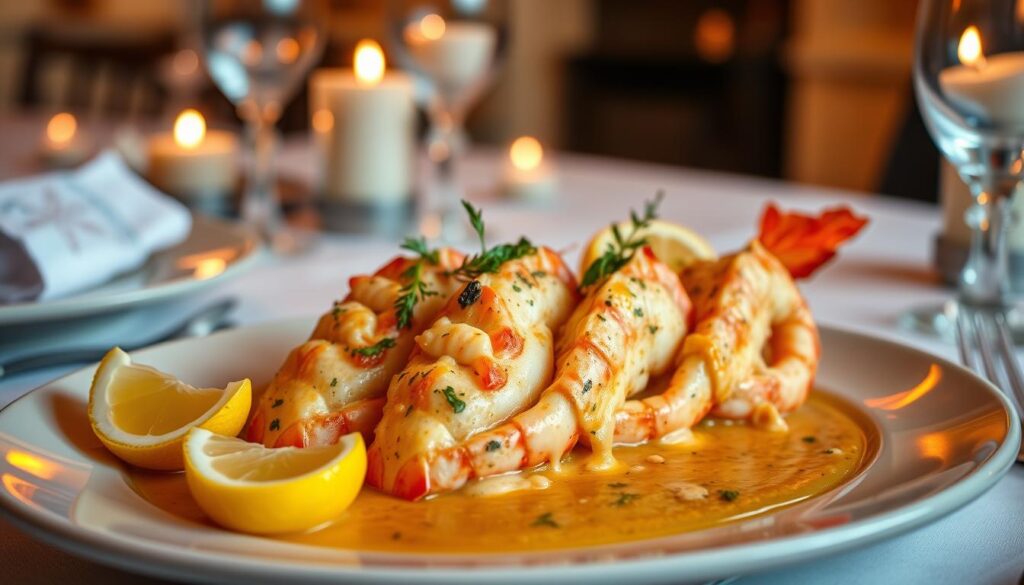
Add a bit of lemon zest for a fresh and aromatic touch. Top it with sweet Spanish paprika and a pinch of red pepper flakes for a hint of heat.
Enjoy this lobster pasta recipe with your favorite pasta or as a main course. It’s a versatile dish that’s sure to impress.
Creating the Perfect Garlic Butter White Wine Sauce
Elevate your lobster tails with a flavorful garlic butter white wine sauce. This sauce complements the lobster’s natural sweetness. It adds depth and richness to your dish.
Wine Selection Tips
For the best results, use a dry white wine like Pinot Grigio, Sauvignon Blanc, or Chardonnay. These wines have the right acidity to balance the garlic butter sauce. Avoid sweet wines, as they can overpower the lobster’s delicate flavors.
Balancing Flavors
To create the perfect balance, melt butter in a saucepan and sauté garlic until fragrant. Next, add the white wine and let it reduce slightly. This concentrates the flavors. Add a touch of honey to balance the acidity, and finish with fresh lemon juice for a zesty finish. Season with salt and pepper to taste.
The white wine sauce complements the chicken vegetable saute perfectly. It lets the lobster’s natural sweetness shine while adding richness to the dish.
| Ingredient | Quantity |
|---|---|
| Unsalted Butter | 1 cup |
| Garlic, minced | 2 cloves |
| Dry White Wine | ⅓ cup |
| Honey | 1 tsp |
| Lemon Juice | 2 tsp |
| Salt and Pepper | To taste |
With this garlic butter sauce, you’re ready to make an impressive lobster dish. It will surely delight your guests.
Cooking Techniques and Timing for Lobster Tails in Sauce
Timing is everything when cooking lobster tails. Broiling them takes about 12-14 minutes. This makes the meat opaque and the edges charred, adding great flavor and texture.
For boiling whole lobsters, use saltwater (1.5 tablespoons of salt per liter). Cook a 1.25-pound lobster for 8-9 minutes. It’s important not to overcook to keep the meat tender.
Sautéing lobster meat in butter is another great choice. It takes about 2 minutes per side for a tender result. Each method needs careful timing to cook the lobster perfectly, keeping its sweetness and texture.
| Cooking Method | Cooking Time | Ideal Lobster Size |
|---|---|---|
| Broiling | 12-14 minutes | 1.5-2 pounds |
| Boiling (Whole Lobster) | 8-9 minutes | 1.25 pounds |
| Sautéing (Lobster Meat) | 2 minutes per side | 1.5-2 pounds |
Whether you broil, boil, or sauté, watch the lobster closely. Avoid overcooking to get a tender, delicious result. With the right techniques and timing, you’ll impress your guests and satisfy your cravings.
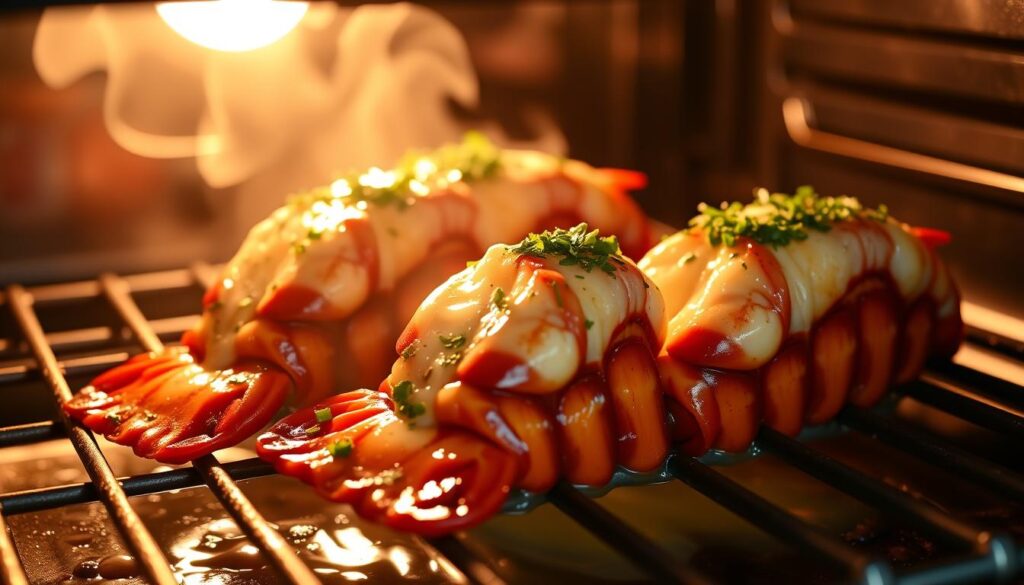
“Perfectly cooked lobster is a delicate balance of temperature and time. Mastering these elements is the secret to achieving that mouthwatering, tender texture every time.”
Complementary Ingredients and Seasonings for Lobster Tails in Sauce
Make your lobster dishes even better by adding fresh herbs, aromatic ingredients, and zesty seasonings. Basil, chives, and flat-leaf parsley add vibrant notes. Garlic and onions bring depth and complexity to your sauces.
Fresh Herbs and Spices
Use fresh herbs like basil, chives, and flat-leaf parsley to enhance the lobster’s taste. These herbs can make your dish pop. For a warm touch, try nutmeg or a dash of cayenne pepper.
Aromatics and Enhancers
Garlic and onions are key for a flavorful base in your lobster sauces. Lemon juice brightens the flavors, and honey adds a sweet hint. For a spicy twist, add red pepper flakes.
| Ingredient | Quantity | Purpose |
|---|---|---|
| Unsalted Butter | 4 tablespoons | Provide a rich, creamy texture to the sauce |
| Minced Garlic | 5 cloves | Add depth and aroma to the dish |
| Double-Concentrated Tomato Paste | 6 tablespoons | Intensify the tomato flavor in the sauce |
| Crushed Calabrian Chili Peppers | 2 tablespoons | Introduce a spicy kick to the dish |
| Cream Sherry | 1/4 cup | Enhance the overall complexity of the sauce and lobster flavor |
| Sugar | 1/4 teaspoon | Balance out the acidity in the dish |
| Lobster Meat | 12 ounces, cut into bite-sized pieces | The star ingredient of the dish |
| Red Pepper Flakes | 1/4 teaspoon | Amp up the heat in the pasta |
| Heavy Cream | 3/4 cup | Provide a velvety texture to the sauce |
| Grated Parmigiano Reggiano | 6 tablespoons | Add a nutty and savory depth to the dish |
These ingredients and seasonings will make your cabbage chicken dinner or lobster seasonings shine. They highlight the fresh and vibrant herbs that complement the lobster’s delicate flavor.
“The key to a truly exceptional lobster dish is the thoughtful selection and balance of complementary flavors.”
Plating and Presentation Tips
To make your lobster tails look impressive, serve them in their shells on a big platter. Add some fresh parsley or chives and a few lemon slices for color. If you’re serving them with pasta, place the tails on top of the pasta for a stunning look.
For individual servings, put a lobster tail in the middle of the plate. Surround it with sauce and sides. White plates are great for showing off the lobster’s colors and sauces.
Use tools like tweezers and brushes to arrange everything perfectly. This makes your dish look balanced and beautiful.
Think about how all the parts of your lobster dish work together. Choose a main focus, mix colors and textures, and keep things balanced. Adding garnishes like edible flowers or fresh herbs can make your dish even more appealing. With care and creativity, your lobster dish presentation will wow your guests and give them a gourmet dining feel.
FAQ
What are the key benefits of preparing lobster tails in a creamy sauce?
Lobster tails in sauce are perfect for special occasions. They combine fresh lobster with garlic for a rich, flavorful dish.
How should I choose between fresh and frozen lobster tails?
Fresh lobster tails taste better, but frozen ones work too. Thaw frozen tails in the fridge or cold water. Don’t microwave or use hot water.
What size of lobster tails should I look for?
Small lobsters (1-2 pounds) are great for pasta. They have sweet, tender meat.
What should I look for when selecting high-quality lobster tails?
Look for bright color and firm texture. Make sure there’s no freezer burn or discoloration.
What essential tools and equipment do I need for preparing lobster tails?
You’ll need a large pot, skillet, sharp shears, cutting board, tongs, and a fine-mesh sieve. You might also need a knife, bowl, and scissors for claws.
How do I properly butterfly and prepare lobster tails?
To butterfly lobster tails, cut down the back shell with shears. Remove veins and shell shards. Separate the meat from the shell, leaving the tail fan intact. Add onion or garlic for extra flavor.
What are the key ingredients in a classic creamy tomato lobster tail sauce?
A classic sauce includes olive oil, onions, garlic, tomato paste, tomato puree, heavy cream, and herbs like basil and chives.
How do I make a delicious garlic butter white wine sauce for lobster tails?
For the sauce, use dry white wine like Pinot Grigio. Melt butter, sauté garlic, then add wine and reduce. Add honey, lemon juice, salt, and pepper for flavor.
What are the best cooking methods for lobster tails?
Broiling is great for lobster tails, taking 12-14 minutes. Boiling whole lobsters in salted water is another option. Sautéing in butter is also delicious.
What complementary ingredients and seasonings can I use to enhance the flavors of lobster tails?
Use fresh herbs like basil and chives. Garlic and onions add depth. Nutmeg and cayenne pepper add heat. Lemon juice and honey add sweetness. Red pepper flakes add spice.
How can I present lobster tails in an impressive way?
Serve lobster tails in shells on a platter. Garnish with parsley and lemon slices. Place them on pasta or individual plates. Use white plates to highlight the colors.
for more recipes
pasta – not only sweet recipes
external link
How To Cook LOBSTER TAIL Perfectly (Restaurant Quality In 20 Minutes!)
